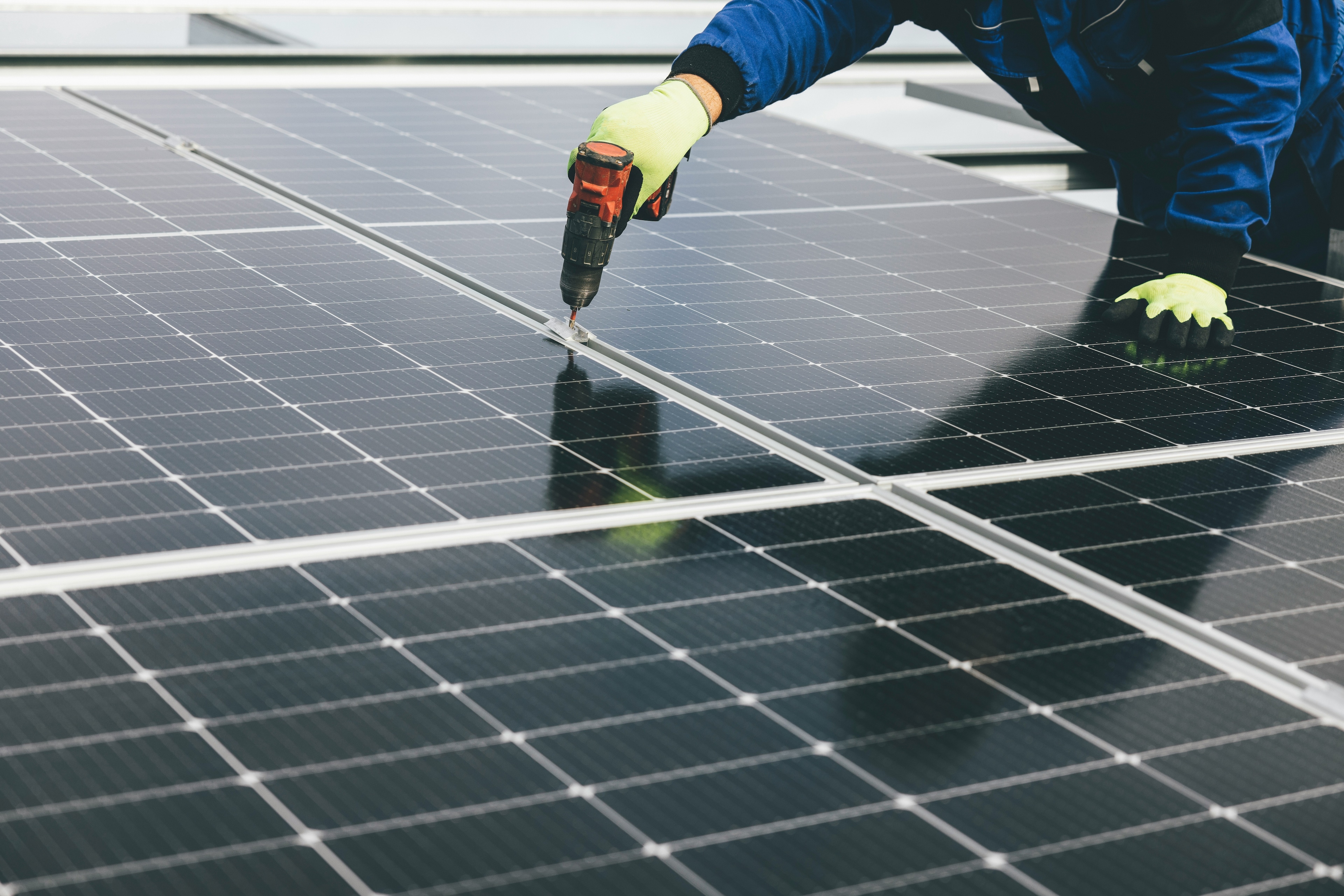IEA: Clean energy investment must reach $4.5 trillion per year by 2030 to limit warming to 1.5°C

Renewable energy worldwide is expected to triple by 2030, energy efficiency improvements will double, and heat pump and EV sales will dramatically rise.
Image: Pexels/Kindel Media
Cristen Hemingway Jaynes
Environmental Journalist, EcoWatchStay up to date:
SDG 07: Affordable and Clean Energy
- IEA's Net Zero Roadmap says limiting global warming to 1.5 degrees Celsius is still possible, but investment in clean energy needs to reach $4.5 trillion per year by 2030.
- The roadmap calls for large new infrastructure networks, low-emissions fuels, CO2 capture technologies and more nuclear power.
- The roadmap also includes an increase in policy-driven clean energy capacity to drive down fossil fuel demand by 25% by the end of the decade.
According to the new Net Zero Roadmap from the International Energy Agency (IEA), thanks to record growth in the clean energy sector, it is still possible to limit global warming to 1.5 degrees Celsius above pre-industrial levels. However, the agency said in order to meet that goal, investment in the transition to cleaner energy would need to reach nearly $4.5 trillion per year by 2030.
Renewable energy spending in 2023 is expected to be $1.8 trillion.
“Today much of the momentum is in small, modular clean energy technologies like solar PV and batteries, but these alone are not sufficient to deliver net zero emissions,” the report said. “It will also require: large new, smarter and repurposed infrastructure networks; large quantities of low-emissions fuels; technologies to capture CO2 from smokestacks and the atmosphere; more nuclear power; and large land areas for renewables.”
The updated roadmap incorporates changes that have happened in the energy sector since 2021, including clean energy technology growth, as well as continued high emissions and increased fossil fuels investment, a press release from the IEA said.
“Keeping alive the goal of limiting global warming to 1.5 °C requires the world to come together quickly. The good news is we know what we need to do – and how to do it. Our 2023 Net Zero Roadmap, based on the latest data and analysis, shows a path forward,” said IEA Executive Director Fatih Birol in the press release. “But we also have a very clear message: Strong international cooperation is crucial to success. Governments need to separate climate from geopolitics, given the scale of the challenge at hand.”
What's the World Economic Forum doing about the transition to clean energy?
The report said that, since 2021, record electric vehicle (EV) sales and solar energy capacity growth, as well as new manufacturing growth for those technologies, have been in line with achieving net zero globally by 2050. Solar power and EVs together are responsible for a third of emissions reductions on the net zero pathway from now until 2030.
This year’s net zero roadmap has renewable energy worldwide tripling by 2030. Improvements to energy efficiency also double, heat pump and EV sales dramatically rise and methane emissions from the energy sector decrease by 75 percent.
The press release said these strategies make up more than 80 percent of emissions reductions needed by 2030.
The roadmap takes into account differences in countries’ circumstances.
“For example, advanced economies reach net zero sooner to allow emerging and developing economies more time. And the net zero pathway achieves full access to modern forms of energy for all by 2030 through annual investment of nearly USD 45 billion per year – just over 1% of energy sector investment,” the IEA said.
Sticking to the net zero pathway means nearly all countries have to move their net zero target dates up, according to the IEA. Investments must also increase for it to work, particularly in developing and emerging economies.
The updated net zero pathway includes a big increase in policy-driven clean energy capacity to drive down fossil fuel demand by 25 percent by the end of the decade, with a resulting reduction in emissions of 35 percent compared to the record high in 2022. By 2050, demand for fossil fuels then decreases by 80 percent. This means no new “long-lead time” upstream gas and oil projects or new coal mines, unabated coal plants or mine extensions would be necessary in the future.
The report did say that some continued investment in some existing gas and oil projects, as well as projects that have already been approved, would be necessary.
“Sequencing the increase in clean energy investment and the decline of fossil fuel supply investment is vital if damaging price spikes or supply gluts are to be avoided,” the IEA said.
Have you read?
Around $1.70 is now invested in clean energy for every $1 invested in fossil fuels. Is that enough to get us to net zero?
The world needs to do more to hit clean energy goals, says UN
The 1.5°C global warming limit is still within grasp – here's how we can reach it
4 pioneering solutions for clean energy investment in emerging economies
According to the roadmap, clean energy technology and critical minerals supply chains need to be more diverse and resilient, but they also need to stay open.
International cooperation to limit global heating to 1.5 degrees Celsius is vital to avoid additional climate risks and having to rely on carbon removal technologies, which are unproven, expensive and might not work at the large scale that might be necessary if we do not expand clean energy fast enough.
“Removing carbon from the atmosphere is very costly. We must do everything possible to stop putting it there in the first place,” said Birol in the press release. “The pathway to 1.5 °C has narrowed in the past two years, but clean energy technologies are keeping it open. With international momentum building behind key global targets such as tripling renewable capacity and doubling energy efficiency by 2030, which would together lead to a stronger decline in fossil fuel demand this decade, the COP28 climate summit in Dubai is a vital opportunity to commit to stronger ambition and implementation in the remaining years of this critical decade.”
Don't miss any update on this topic
Create a free account and access your personalized content collection with our latest publications and analyses.
License and Republishing
World Economic Forum articles may be republished in accordance with the Creative Commons Attribution-NonCommercial-NoDerivatives 4.0 International Public License, and in accordance with our Terms of Use.
The views expressed in this article are those of the author alone and not the World Economic Forum.
Forum Stories newsletter
Bringing you weekly curated insights and analysis on the global issues that matter.
More on Energy TransitionSee all
Tony Pan
August 27, 2025
Thomas Brostrøm and Sandeep Kashyap
August 26, 2025
Charles Bourgault and Sarah Moin
August 19, 2025
Jürgen Karl Zattler and Adrian Severin Schmieg
August 18, 2025
Piyush Verma
August 18, 2025







